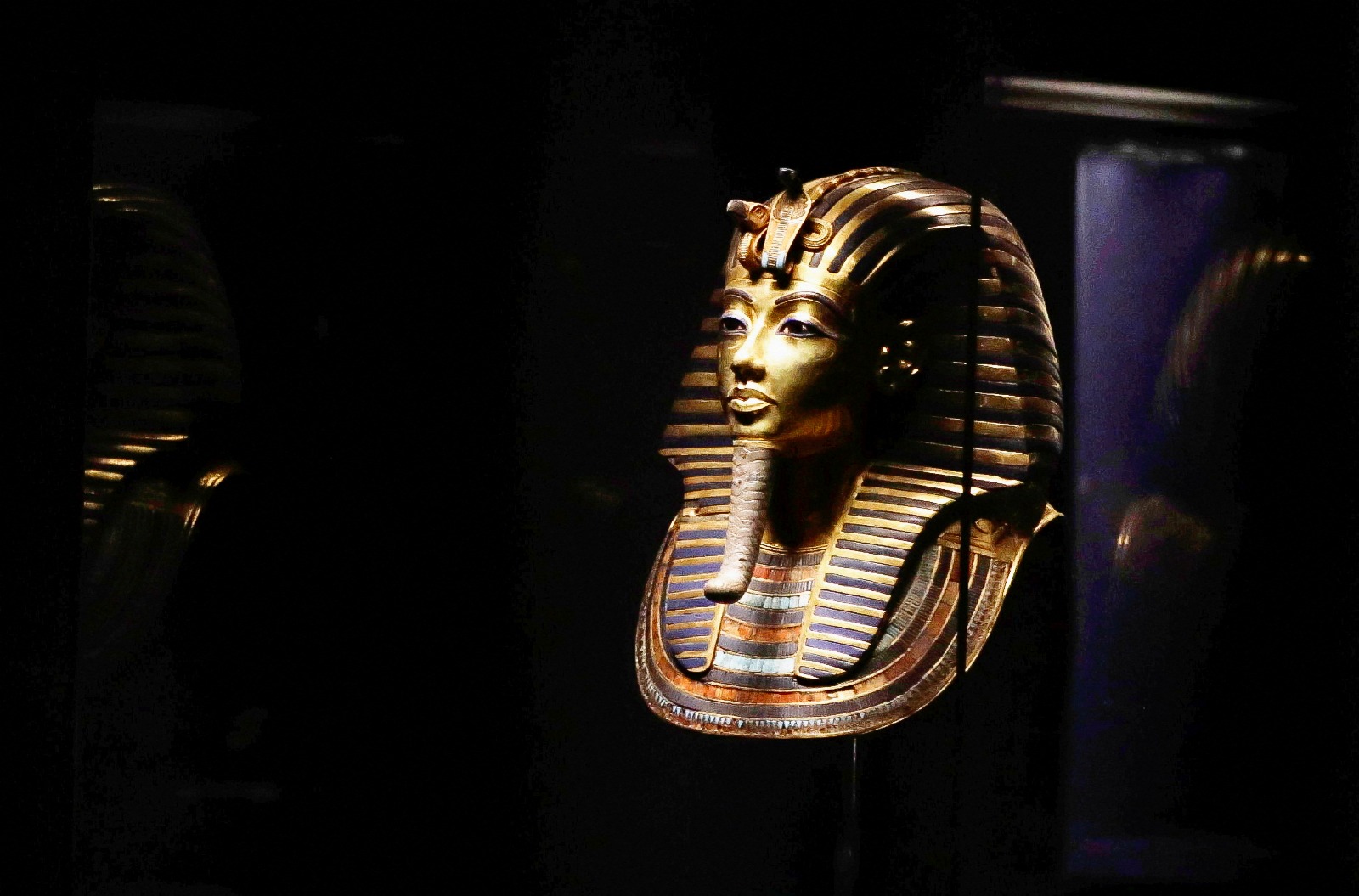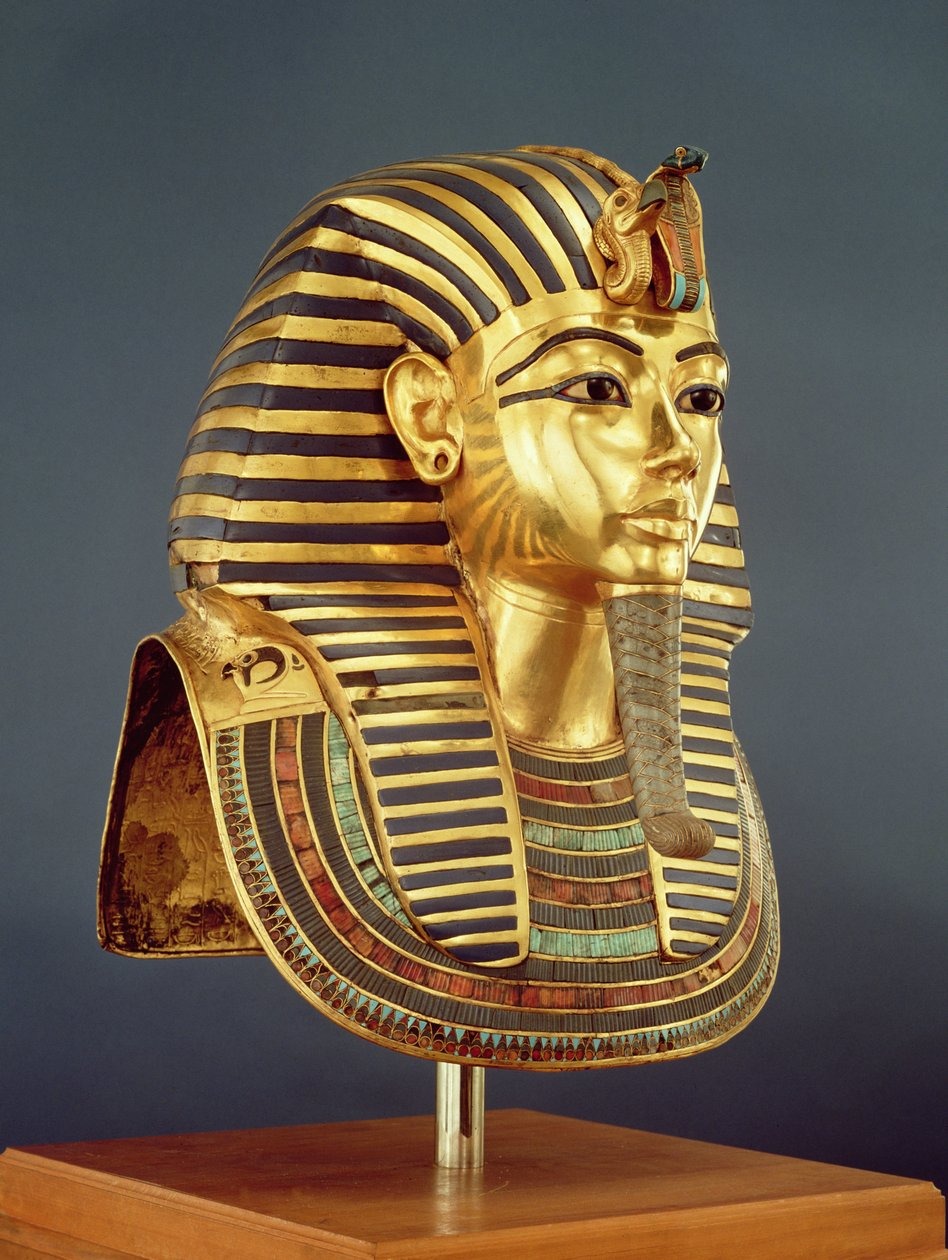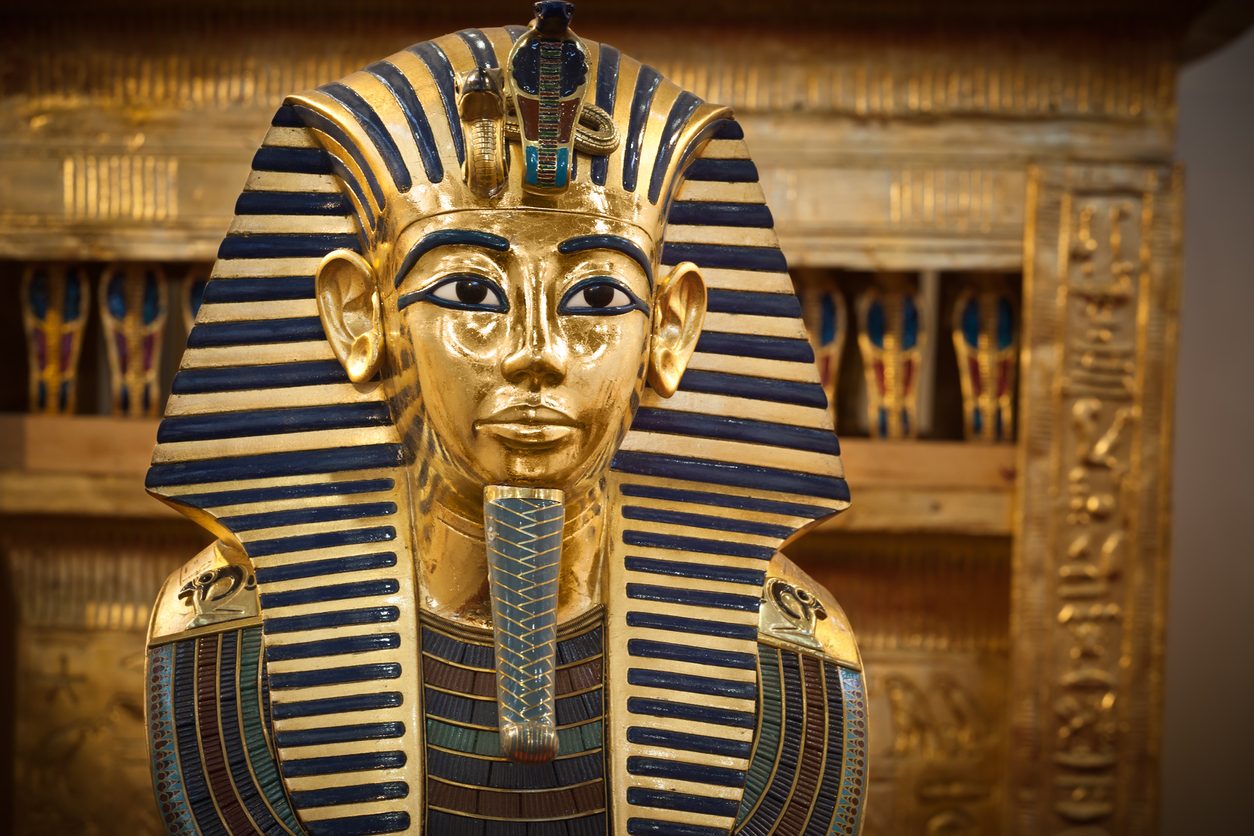By Hossam Zidan
King Tutankhamun ascended to the throne at the age of nine and ruled until his death at around 18 years old. He became king in 1341 BC and passed away in 1323 BC, ruling for approximately 10 years.
The Golden Mask
Historian Bassam El Shammaa reveals the secrets of Tutankhamun’s famous golden mask, which is considered the most renowned artifact in the world. The mask has no direct connection to the king’s short life, nor does it replicate his actual facial features, as it is a funerary mask. Its primary purpose was connected to the religious and funerary rituals of ancient Egypt.

The mask represents King Tutankhamun as Osiris, a deity associated with the afterlife in ancient Egypt. Thus, it was not meant for daily use but was designed to cover the head of the mummy, symbolizing the king as Osiris. Despite this, the artist behind the mask insisted on giving the face thick lips resembling those of Tutankhamun’s grandmother, Queen Tiye, possibly due to her southern origins. The mask not only elevates Tutankhamun from king to deity, but it also transforms him into the embodiment of Osiris. This religious and funerary tradition is what inspired the creation of the mask.
The mask is made of pure gold, standing 54 cm tall and weighing over 9 kilograms. It consists of two layers of gold that were joined through hammering, and it is adorned with intricate engravings, polished to a fine sheen, and encrusted with precious stones. The mask features the traditional nemes headcloth, a well-known headdress in ancient Egypt with its distinctive parallel stripes.
The mask includes a ceremonial beard, which does not represent Tutankhamun’s actual beard but is instead the sacred beard of the deity Osiris. The beard was inlaid with faience (Egyptian blue), though the colors of this inlay have faded over time to a dull gray.
At the forehead of the mask, there are two symbols: the wadjet cobra and the nekhbet vulture, representing protection and sovereignty. Decorative lines on the mask, made of blue glass rather than the more precious lapis lazuli, imitate the appearance of this prized stone. The question arises as to why the ancient artist chose blue glass instead of genuine lapis lazuli. It is possible that lapis lazuli was not available at the time, so the artist substituted it with blue glass. The eyes of the mask are crafted from quartzite and obsidian, or volcanic glass.

The necklace worn by the mask is composed of rows of colorful glass pieces mimicking precious stones such as lapis lazuli, jasper, and carnelian, along with obsidian. The necklace features 12 rows of these materials. On the back of the mask, there are vertical lines of hieroglyphs etched into the gold, containing a passage from the “Spell for Coming Forth by Day,” a significant funerary text from the New Kingdom. This inscription, known as “Spell 151b,” is a vital religious text that appears on the back of the mask.
Above the mask’s collar is a necklace made of gold and faience beads, referred to in hieroglyphs as a “Shebyu.” This necklace was found attached to the collar of the mask, completing the sacred and royal regalia of the king’s funerary ensemble.








































admin in: How the Muslim Brotherhood betrayed Saudi Arabia?
Great article with insight ...
https://www.viagrapascherfr.com/achat-sildenafil-pfizer-tarif/ in: Cross-region cooperation between anti-terrorism agencies needed
Hello there, just became aware of your blog through Google, and found ...